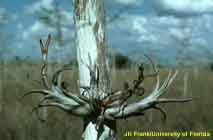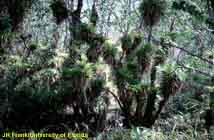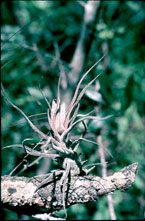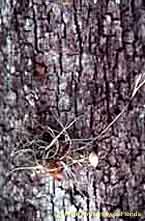| Table 1. Florida bromeliads under attack by Metamasius callizona in native habitats | ||
| Tillandsia utriculata Linnaeus Giant airplant Endangered |
Tillandsia balbisiana Schultes Northern needleleaf Threatened |
Tillandsia flexuosa Swartz Twisted airplant Threatened |
| Tillandsia fasciculata Swartz Cardinal airplant - Yellow bract Endangered |
Tillandsia fasciculata Swartz Cardinal airplant - Red bract Endangered |
Tillandsia variabilis Schlechtendal Leatherleaf airplant Threatened |
 |
 |
|
| Tillandsia paucifolia Baker Potbelly airplant |
Guzmania monostachia (Linnaeus) West Indian tufted airplant Endangered |
Tillandsia simulata Small No vernacular name |
Table 2. Florida bromeliads which probably will be attacked by Metamasius callizona

Tillandsia pruinosa Swartz Fuzzywuzzy airplant
EndangeredCatopsis berteroniana (Schultes)
Powdery strap airplant
Endangered
Catopsis floribunda (Brongniart)
Florida strap airplant
EndangeredCatopsis nutans (Swartz)
Nodding strap airplant
Endangered
Table 3. Florida bromeliads which probably will not be attacked by Metamasius callizona
Tillandsia bartramii Elliott
Bartram's airplantTillandsia setacea Swartz Southern needleleaf

Tillandsia usneoides (Linnaeus) Spanish moss
Tillandsia recurvata (Linnaeus) Ball moss
Metamasius callizona